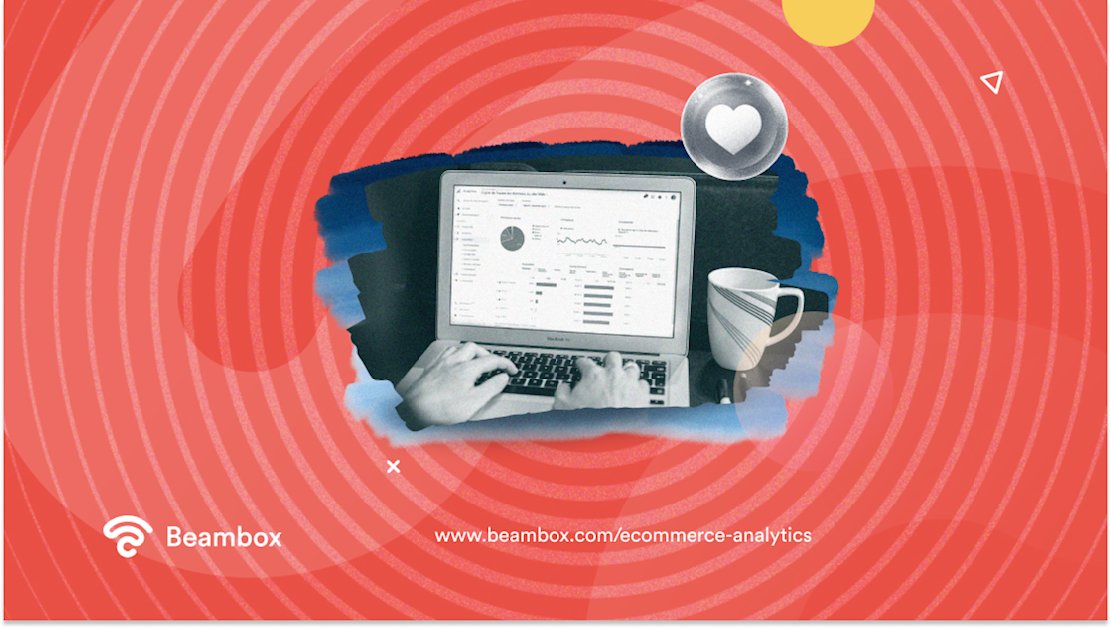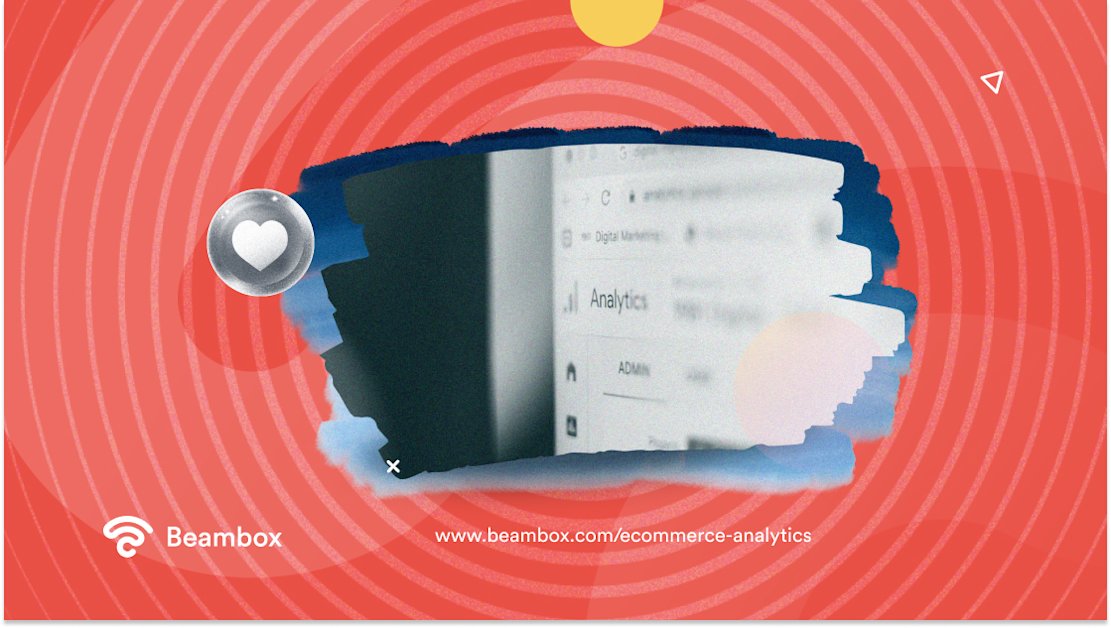No matter what you’re selling online, you’re undoubtedly making several decisions on a daily basis. But how do you know these decisions are right? By bringing e-commerce analytics into the picture.
These data patterns help you see the bigger picture of your business’s performance. Your time, money, and effort are at stake here.
Therefore, ignoring to measure things isn’t a wise step. But again, how do you know you’re measuring the right key performance indicators?
If that’s the question running through your mind, you’ve chosen the right article. Here, you’ll learn all about e-commerce analytics. By the end, you’ll be able to pinpoint the ones your business can’t go without measuring.

First Things First, What Is Ecommerce Analytics?
If you’re new to the business, you might not be familiar with the term. So, learning “What is e-commerce analytics?” would be a good first step for you.
E-commerce analytics is the process of digging into actionable insights into your online business. It’s about finding, understanding, and sharing the patterns in the data that make an impact on your store’s success.
However, just measuring your sales isn’t enough. There are five types of e-commerce analytics that weigh in to give collective results.
First, you must analyze your audience. Not all of your products will have the same target customer. So, see whether most of your audience is male or female. Keep tabs on their age and demographics to see if they fit your customer’s profile.
Moreover, customer data collection tells you what devices people are using to interact with your business. Knowing this data, you can make better marketing efforts to attract the people you want to sell to.
Second, customer acquisition analytics can take audience insights to the next level. These tell you where your audience is coming from. Is it from social media or your website?
It also tells you the number of people interacting on each platform. Here, you can focus on working channels instead of wasting money and time on something that doesn’t benefit your business.
Third is audience behavior, and fourth is conversion. These analytics are the ultimate support of good decisions and marketing campaigns.
They won’t just visit your website and directly buy from you. They need more. When you know the likes, dislikes, and habits of your audience, you can create an irresistible offer.
Lastly, you need to measure paid and email marketing campaigns. After all, you’re spending money here, so you must know how it’s performing. Otherwise, you’ll be losing money.
Traffic Sources for Data Collection
While knowing the types of e-commerce analytics helps, it isn’t enough. If you don’t know the sources of traffic for your e-commerce website, measuring results will become hard. So, let’s discuss where your audience comes from.
- Paid Advertising: When people want to interact with a business, social media platforms will be their first choice in most cases. The paid ads you display there and on Google are another source of traffic. They reach more accounts and spread the word for you.
- Search Engine Optimization: Your website won’t always be the first place your audience searches for you. But it has to be one of the top results when they do search for it. So, having a variety of educational and valuable content will help your SEO and bring more visitors.
- Email Marketing: It’s a common misconception that email is dead. Well, it isn’t because ecommerce email marketing gives you a guarantee to deliver your message to your customers. When an update or offer interests your email list, it becomes another source of traffic to your website.
- Mobile Optimization: 46% of Americans use their mobile phones for five to six hours daily. If you optimize your website for mobile phones, it will become another source of traffic. In fact, if you don’t optimize it, you’ll be losing customers and ultimately revenue.
- Referrals: When other people mention your website on their blog or website, their audience can have access to your store. These are referrals that can be another source of traffic. If you want more referrals, you can try contacting influencers and affiliate marketers.

Now that you know where your traffic might be coming from, let’s get to the real deal. You must know what to measure since it’s all about tracking the right data.
So, start by measuring your conversion rate. If you’re getting visitors who are looking at your products but not actually buying them, it won’t be any good. Therefore, you must know what percentage of your audience is converting as a result of your marketing efforts.
However, acquiring customers costs five times more than retaining them. So, focusing on gaining customer loyalty is better than trying to sell to a new person each time.
Measuring the customer’s lifetime value can help you determine how loyal a customer is. It is the amount of business a single customer brings in.
Next, you must keep tabs on your shopping cart abandonment rate and bounce rate. Because even if you convert customers and they fill up their carts, they might change their minds.
They may find additional shipping charges too much or don’t want to go through a long checkout process. Whatever the case, knowing what percentage of customers abandon their carts can help you send the right offer. Card abandonment emails are the best remedy for this issue.
Another metric e-commerce business owners usually measure is their cost per click on ads. While that is equally important, combining it with return on ad spend paints a better picture.
For example, if your cost per click is more than the return on ad spend, then your ads aren’t working well. Knowing this, you can create better content that resonates with your audience and encourages them to buy from you.
After knowing what to measure, most e-commerce businesses face a burning question: what tools should they use?
Just like measuring the wrong data has the opposite effect, using the wrong tools does, too. Trusting every website claiming its tool to be the best would only push you towards failure.
But don’t worry because we’ve curated a list of the top four e-commerce analytics tools that are the most accurate.

Google Analytics Ecommerce Tracking Is Completely Free!
Everyone knows a list of data tools usually starts with Google Analytics e-commerce tracking, even if they’re new. So, that’s where we’re going to start as well because it isn’t just accurate, it’s also completely free!
But that isn’t the only reason why most e-commerce businesses start generating data patterns from this tool.
It comes with Google Analytics Enhanced E-commerce, which allows you to track the customer journey through the sales funnel.
As mentioned earlier, customers won’t directly proceed to buy from you. Knowing what steps they follow to convert can help you push the right strategies forward. Moreover, it clearly shows you the percentage of abandoned carts.
However, navigating this tool might be hard if you’re using it for the first time. There’s a steep learning curve that can tempt you to hire help. But then what’s the use of it being free if you have to pay someone to navigate it?
Mixpanel Makes It Easier To Convert Audience to Customers
If you want to avoid the learning curve of Google Analytics, go for Mixpanel. This tool presents your customers like an open book when it comes to their likes, dislikes, and behavior. Here’s how.
Firstly, you can dive deep into your customers’ minds and create offers that always hit the target.
Secondly, you can see customer interactions with your brand. If you know how they’re navigating your website, you can optimize it to give them a better experience. This will ultimately result in more conversions.
Thirdly, how can you send targeted marketing messages without segmentation?
Mixpanel uses cohort analysis to divide your customers into common groups. However, its pricing model can sometimes become too expensive. Also, the data you export doesn’t show up correctly in all fields. Remember, though, to pick an effective segmentation style like behavioral segmentation.

Hotjar Generates Heatmaps for Better Customer Tracking
What would you do if you could see where your customers were clicking and what they were viewing? You would probably take that data and optimize your website to make all movements end up in sales.
Hotjar is an e-commerce analytics tool that makes the above scenario a reality. Its heatmaps, conversion funnels, and visitor recordings work together to create a map of your customers’ movements.
Moreover, your customers can leave feedback through Hotjar’s feedback tool. If you think feedback is of no use unless it’s public, you’re believing a myth.
Even if you can’t display your customer thoughts to gain more attraction, you can use it in other ways. By knowing what your customers like and what they dislike about your business, you can make improvements. When your existing customers see this effort, it will obviously impress them.
They might even leave you a public review if you solve their problem. Additionally, these improvements will result in more sales.
But if your website has a large number of visitors, you might have trouble storing data in Hotjar. Apart from that, it’s one of the best tools to understand your customers’ journeys and their behavior.
You Won’t Have To Hire an A/B Testing Specialist With Optimizely
Not wanting to discourage you, we kept the most expensive option, Optimizely, for the end. But its pricing is justifiable since it lets you create a tailored shopping experience. Here’s how.
It uses A/B testing and optimization to achieve the personalized shopping experience that you want to give your customers.
The Web Experimentation tool it offers can help you save the hefty sum you’ll otherwise spend on failing marketing strategies. If, during the A/B testing phase, you find something’s not working, you can easily make changes.
Furthermore, you can try out chatbots and refine your checkout process to decrease cart abandonment.
But again, many e-commerce business owners consider its price too intimidating. While many websites say it’s between $ 2,000 to $ 3,000 a month, it’s better to request pricing for your business.

How To Enable Ecommerce Tracking in Google Analytics 4?
As mentioned earlier, Google Analytics is one of the most common tools to analyze the success of an e-commerce business. Since it’s free and gives a good starting point, the only problem here is the learning curve.
Your first question must be, “How to enable e-commerce tracking in Google Analytics 4?” If that’s the case, here’s how.
There are two ways to enable this: through Google Tag (gtag.js) and through Google Tag Manager.
If you’ve correctly implemented Google Tag on your website, you don’t have to do much. Google Analytics will automatically log an event “purchase” every time a customer places an order. By default, this event is a conversion you can review by going to Configure in your Google Analytics 4 Account. Then, head over to Conversions.
For the second method, you have to follow three steps. The first step is creating a GA4 Configuration Tag. For this, log into your Google Tag Manager Account and create a new tag.
Next, select “Google Analytics: G4A Configuration” and add your Measurement ID. Click on the triggering box of “All Pages.”
But where will this Measurement ID come from? In Google Analytics, go to Admin > Data Streams and then copy the id.
The next step is to create an E-commerce Trigger from the Google Tag Manager Workspace.
Lastly, you must create an E-commerce Tag and link it to the GA4 Configuration Tag. Then, set the trigger to “GA4 Ecommerce Event” and save. For a more detailed description, head over to Google Analytics Help.
What To Do With the Data You Track With Ecommerce Analytics?
What to do with the data you learned to measure is the last thing to discuss here. Once you’ve learned that, you’re all ready to set your e-commerce analytics in motion and see yourself grow. So, let’s begin.
Firstly, measure the success of your customer engagement strategies. When you know how your promotional content is performing, you can make better decisions.
Moreover, you can tailor your campaigns according to your customer’s preferences. When people find an ad about something they already want, they’re more likely to buy.
Secondly, you can optimize your pricing and inventory. If people are hesitating to purchase because of high prices, you can either increase the quality or decrease the price. On the other hand, managing your inventory will also become easier when you buy just the right amount.
Thirdly, these data patterns help you know your customers and create experiences personalized for them. It’s the best way to keep your customers happy and make them loyal to your business. When you’ll be holding their hands throughout the customer journey, they’ll never choose another business.
Lastly, you can even detect fraud and avoid losing money through your e-commerce website. Since these analytics paint a clear picture, nobody will be able to steal or create legal complications for you.
Tracking Ecommerce Analytics Can Be the Step That Sets You Apart
That concludes our discussion about e-commerce analytics. So, to recap, these data patterns help you make data-driven decisions and create better circumstances to grow.
Some businesses think they’ll be just fine without this data. Don’t make the same mistake because ignoring trends is one of the most common reasons for failure. If your commerce supports a local business, try out WiFi marketing with Beambox. You can automate your marketing campaigns, collect valuable data and improve your online reputation.
Beambox does not require additional hardware and has no hidden fees. Try it for free now!
Get Started With Free WiFi Marketing
Beambox helps businesses like yours grow with data capture, marketing automation and reputation management.
Sign up for 30 days free